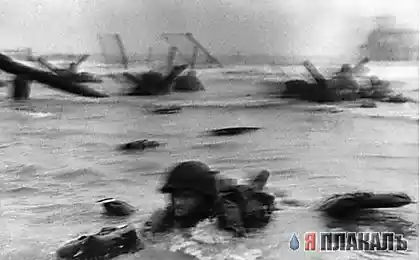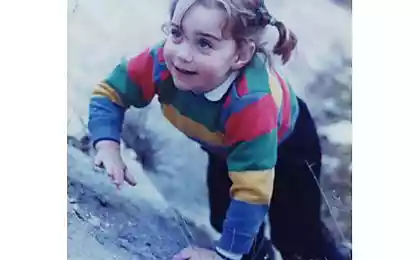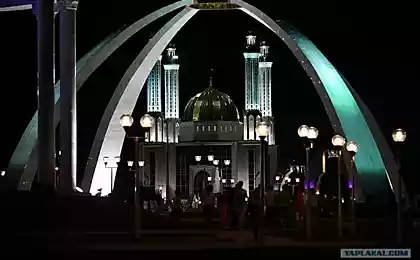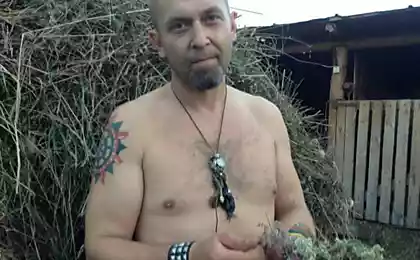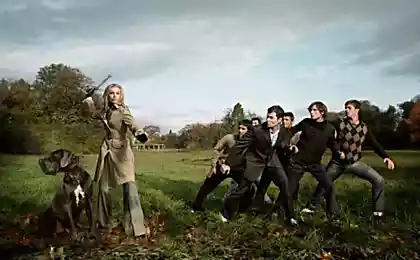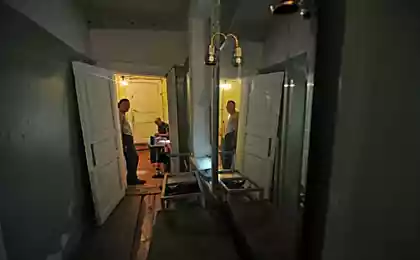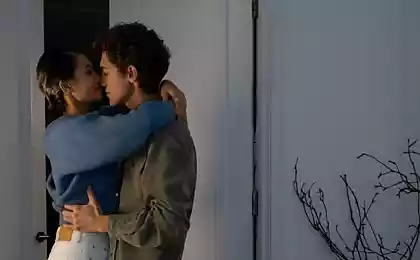639
Photojournalist Igor Gavrilov: Life caught unawares
Igor Gavrilov – a living legend of the Soviet photojournalism. His work is amazing, each photograph is a life, not covered, and caught off guard. Many brilliant pictures of the author were not published at the time only because he was too believable.
For Igor main genre – analytical report. The main purpose of the job to photograph the truth, in search of which he travelled throughout Russia, worked in 50 foreign countries, photographed almost all the hot spots of the country, on the seventh day after the explosion, flew over the reactor of Chernobyl.
Professionalism, a love for their work, and correct principles did the work of Igor significant and internationally recognized. The photographer's pictures were published in prestigious international magazines: Paris Matsh, Le photo, Stern, Spiegel, the Independent, Elle, Рlay boy – and many others. Nominated for the title "Best photographer of the year" from Time magazine. The winner of the World Press Photo awards.
In the edition "Russian reporter" published an article, which took 50 shots of the photographer made in different periods of life – from student years to the recent travel the world. Igor told about each picture − in a nutshell, somewhere in detail, but somewhere – and with digressions into more General topics.
It turned out a poignant story, forcing to look at pictures of quite a different angle.
Communal
The late 80's- early 90's. Communal. Looks like a decoration at the "Mosfilm", where the construction of temporary peregorodki depicting some life. But it is a real apartment.
I was asked to take the theme of communal. I'm not in this one apartment was, and strained all my friends who know or have friends living in communal apartments. But this absolutely amazed me. In the frame − one double room one family. There in the corner sits a mother, beneath us is her daughter, very cute. They just razmorozili this big room with plywood partition to separate from each other. But razmorozili not to the ceiling, and up the middle, and therefore it was possible to climb this wall, and from there to make such a frame. Remember, dust was not wiped, I think, six months or a year, I tears out the whole in some webs, dust, boundaries.
A symbol of the era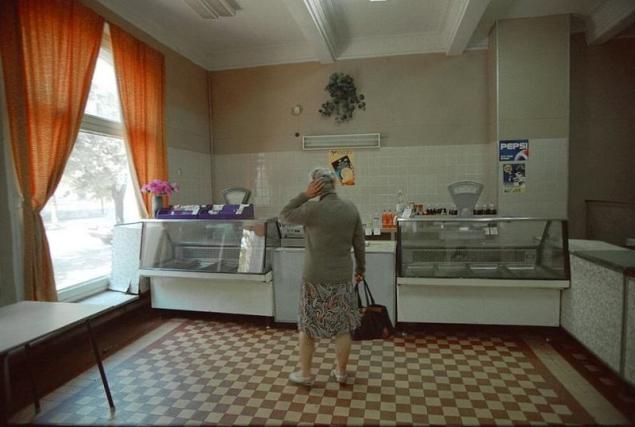
What we have lived enough years ago, when people came into the store and saw there absolutely empty shelves. This is the beginning of the 90th or 89th.
"Where have you been?..."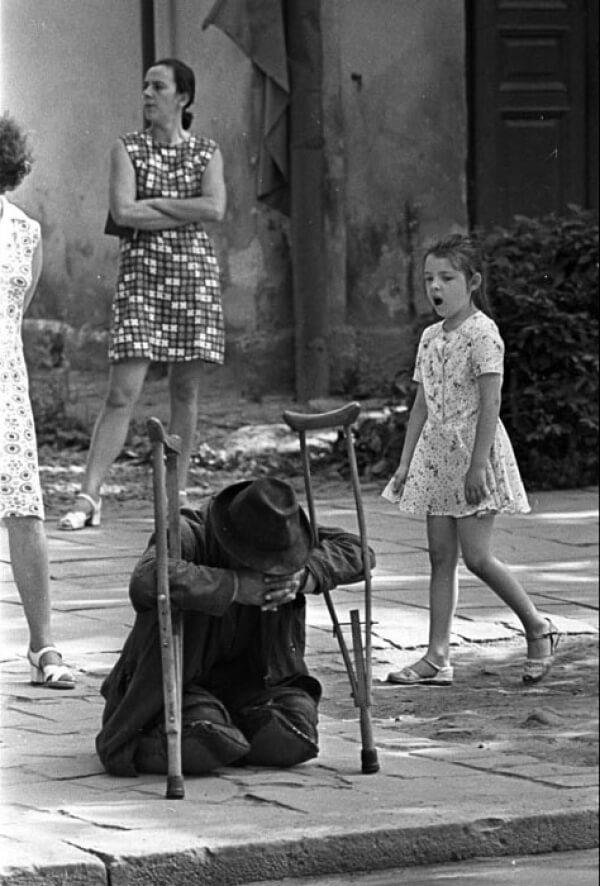
Frame with the most unhappy fate. I made it in the Western Ukraine, in Ivano-Frankivsk. In those days there gathered a large number of foreigners from the Soviet bloc, a lot of reporters. I went to the press center of the hotel and saw this scene at the bus stop. Just a couple of times clicked. I was attacked by some military, began to shout to the whole Ivano-Frankivsk, that I defame the Soviet way of life, is why I shoot people with disabilities, where I came from.
In the "light" frame is not printed, and wherever I might offer, it never received. Chief editor of the magazine "Soviet photo" himself with his own hands the frame three times out of collections that were sent to some international photo contests – "Interpress-photo" World Press Photo, accompanying their actions impartial review.
The wind blew out of adjustment. In "Soviet photo" gathered a full hall of the Moscow editorial photographers, the subject of discussion — how to modernize the magazine. I took this picture with the words: "Just some pictures like print". And in response I heard: "Igor, and where that you been before, why are you such footage did not bring in "Soviet photo"?"
A lonely, but wise
This Victory Day, about the year 76-77. Such a scene was formed on embankment. I think the most wise is the one in the middle is single, he is busy drinking beer, eating a sandwich. And these is still unknown what will be doing.
The earthquake in Armenia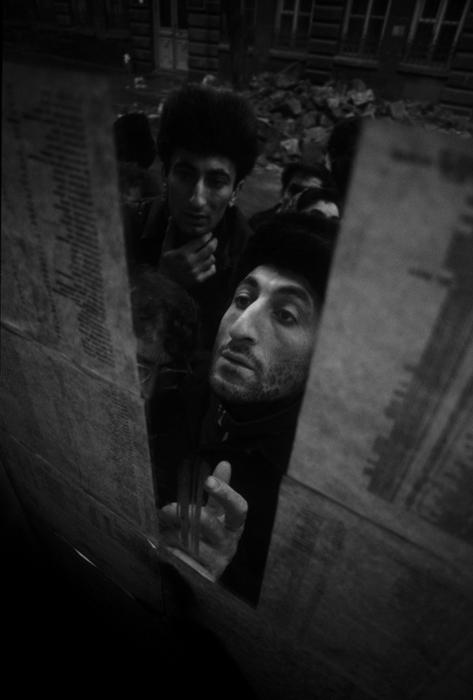
Lists of people who found and managed to identify it. They hang on the glass – press-the centre there is a makeshift in some zdanitse, and here the people all the time come, read.
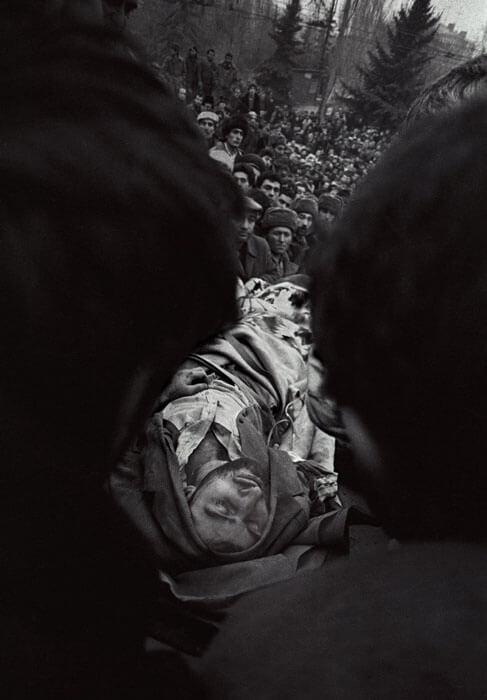
The chief engineer of a sewing factory. It was dug up from the rubble of the destroyed factory 2.5 hours, all this time I was standing under the swaying plate on the protruding beam. It is clear that for two and a half hours I was able to take a lot of photos, but some force kept me in this unsafe place. Three, four shots – all I had to withdraw from his position. Nothing could remove. And yet it is one of the best shots here in this series. That's who helped me? I am inclined to think Him. Well, maybe it just happened.
When I arrived in Moscow, the pictures showed the Light on and gave nominally a reversal rather calm photos. And I was very hurt.
I was hoping that would print more photos and more strong. And I sent it all in "Time" and "Time" was released with the main report numbers. And they nominated me for this report on the best reporter of the year.
The first international competition of hairdressers in Moscow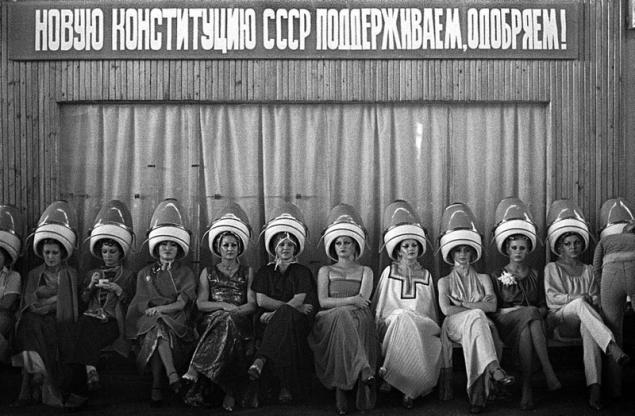
This is the beginning of the 80s. Girl in the picture − models of the competition, they dry hair so this is a great poster. The interesting thing is that this photo was published in the magazine "Ogonek" in the years before perestroika, but a few kadrirovanie. The main artist took from the Cabinet a large pair of scissors with a length of 20 centimeters and with the words "you, uh..., Gavrilov" cut a poster.
Vysotsky's Funeral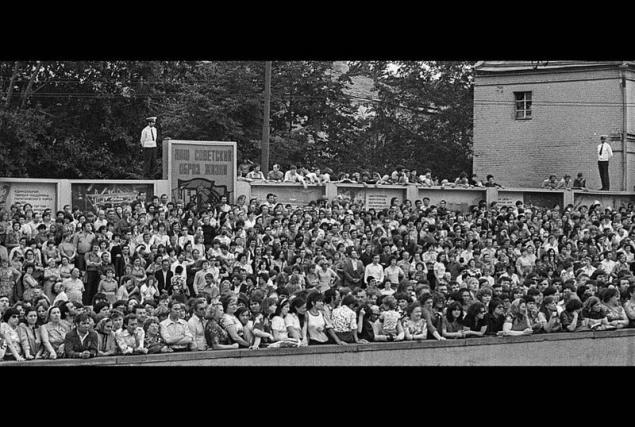
Taganka, opposite the theatre. The Funeral Of Vladimir Vysotsky. I stood at the coffin in the theater two hours, could not leave. The exposition was wrong, and when came to the square, it's all I saw. And only now, just this year I realized that actually the funeral of Vladimir Vysotsky is the first unsanctioned rally in the Soviet Union. The first nation-wide disobedience to the authorities, when people came, nobody called, nobody was pounding, as was done at the demonstration on 7 November or 1 may, and they came.
Too loose
The detention center in Moscow on Altuf'evskoe highway. I filmed there several times and every time – with great interest. Well, what can I say? With great pain is too pompous. No pain-that was not special. But sorry for the children. There collect all run away from home, found in railway stations, on the streets.
Him when sheared, the lice jumped him, three meters from him. I barely had time to shrug, thought that he all sensibly until it was removed.
Waste-free production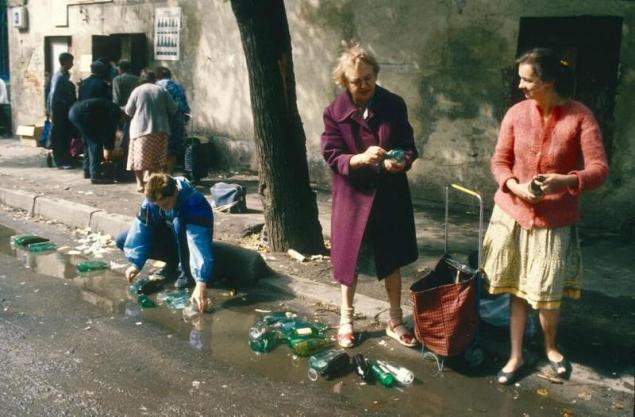
70, Moscow. Godless lane. Opposite that window, on which people pass dishes, just washed from the labels in a puddle, there is a shop "Mineral water" is quite famous in Moscow. In order to pass the dishes, get money, go in front and buy wine or beer there, too, were sold, people in this business and engaged.
Life after Afghan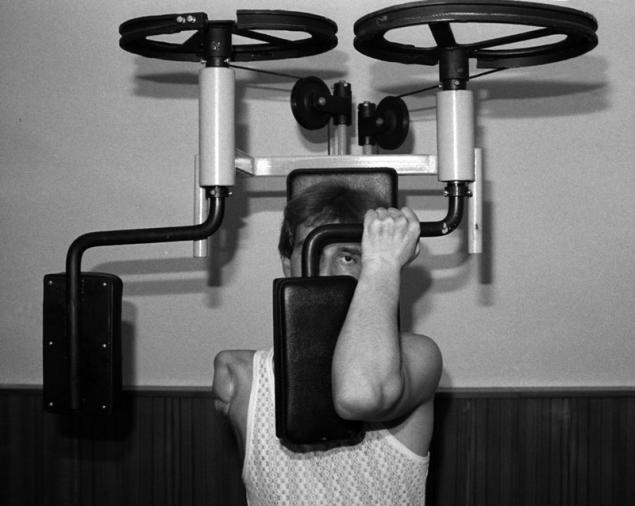
The late 80s the suburbs. It's a rehabilitation hospital for soldiers returning from Afghanistan. There are here the boys were. A hospital – 500 people, who have just returned from there and saw death. With them it was hard to staff.
The best picture of 1990 in America
November 6, 1990, the first year, the job of the magazine "Time" − to remove the decoration of the city before 7 November. This is the last on 7 November, when there was a Communist demonstration. The frame was printed in "Time", and then he became the best photos of the year in America – healthy book, I have it. And the next day nothing was. All the last demonstration, last parade. Paragraph.
Photograph is not worth the grief caused for the sake of this photo
I was shooting something in Georgia – and suddenly the avalanche in Svaneti. One male Swan was at the bottom when the avalanche came down on his village and on the mountain roads we went together to the scene of the tragedy. Our road took three or four days. Came – the whole village was destroyed. I started to take off. There was nobody on the streets, no absolutely. And suddenly I saw this remnant of the house raised these people – man, woman, and child, they are carrying small cups with chacha or vodka. The man on his chest the portrait of the deceased under an avalanche of his relative. I understand that I can make enough for such a stiff frame. They go. I know where to do it, you know how to do it. Wait. Here they come, I raise the camera to your eyes, one time press. The utter silence of the mountains. And this man looked at me. Behind me is my Swan that I arrived, so I put my hand on the shoulder and says, "He don't like you taking pictures".
And I did not to shoot more, did not make a single frame. The woman was crying, crying, on his knees throwing and snow shoveled, and the child stood to one side so strange, with a hat, in one eye tight, and a man. I did not remove. And when it ended, the man came up to me and invited me to the funeral in the dugout. Others to invite to such events were not accepted, but I was invited for the shown respect.
Kids in cages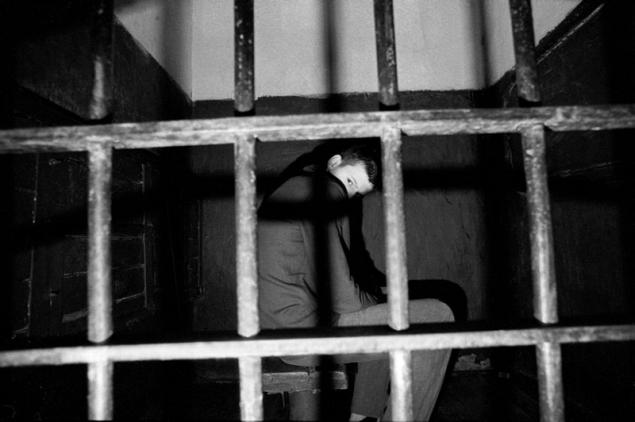
The first publication in the magazine "Ogonek" from places not so remote – as earlier in the Soviet Union such materials are not printed. It Sudskogo colony for juvenile offenders. For four days I made a material which, in General, brought me a lot of fame and a lot of medals, was published in the Independent Magazine in English, and many books have been published. Then there was a digital camera, I could not have on display to see, and whether I have a shadow fell. I have this shade and wanted. It's in the hole, guy sits and stares at me, even though I didn't ask him to watch.
Road death
The beginning of a journey to the Pamirs, early 80's. This is one of the most difficult trips. We drove along the road Khorog – Osh, and this road was called the road of death. There highlands, 4,5–5 thousand meters, the road serpentines the cliffs. And transmission we flew the car. If not for the guards... they all help each other, because they understand that stop you on this road at night, and you might not Wake up.
Weather non-flying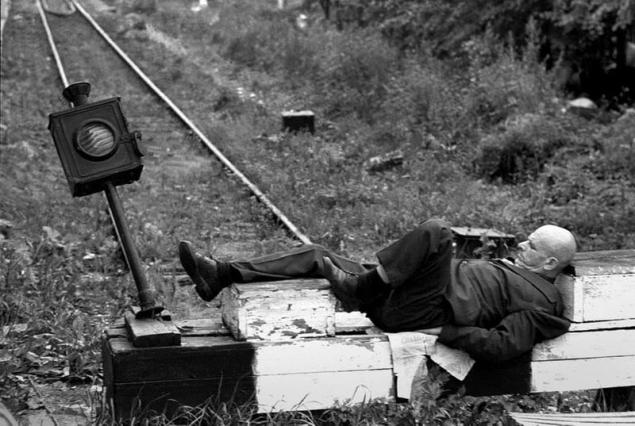
This is the "Domodedovo" airport, the 70-ies. I run from the train to the terminal building. The weather was bad and the planes do not fly, so all neuletevshih resolved at the airport and around. The man in the picture is not gone, he sleeps here at the end of this train "the way".
The first time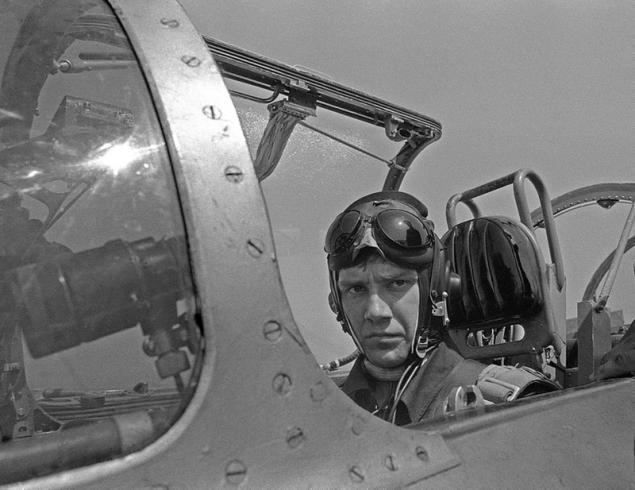
This is the future Lieutenant, before first solo flight. That's his opinion. The first time the instructor be with him, he sits first in doubles. This, in my opinion, the Orenburg flying school and Omsk – in General, in those parts.
Building the future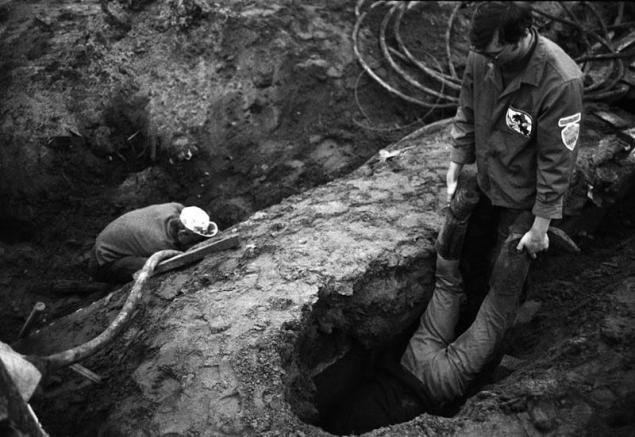
This is Sakhalin, 1974. I went to practice student photographer of the construction team. In this picture my friends and classmates. And the man that holds the legs is not clear who already is Egor is Correct, which is now one of the leaders of "Interfax". It's the guys under the heating pipes are laid an electrical cable, one end of another transfer.
With a vendetta all right
Corsica. I traveled through Corsica by car of the head of the Corsican mafia. We drove high into the mountains. There was some kind of poet, artist, writer very nice people, we talked to them, drank wine. I walked away from the company, saw these here two colorful guys. It is the villagers high in the mountains. I speak French very badly. And they have another dialect. Well, I have not found anything better how to ask: "what you have here is a vendetta?". And one of them immediately climbed over the back and pulling it out from under his shirt a pistol and speaks: "And here we are, the vendetta is always ready. Here vendetta – please." And then smiled sweetly.published
Also interesting: an Incredibly aesthetic rural life — photo essay
Amazing towns on the edge of the cliff
P. S. And remember, only by changing their consumption — together we change the world! ©
Source: cameralabs.org/10274-zhizn-pojmannaya-vrasplokh-snimki-legendarnogo-sovetskogo-fotozhurnalista-igorya-gavrilova
For Igor main genre – analytical report. The main purpose of the job to photograph the truth, in search of which he travelled throughout Russia, worked in 50 foreign countries, photographed almost all the hot spots of the country, on the seventh day after the explosion, flew over the reactor of Chernobyl.
Professionalism, a love for their work, and correct principles did the work of Igor significant and internationally recognized. The photographer's pictures were published in prestigious international magazines: Paris Matsh, Le photo, Stern, Spiegel, the Independent, Elle, Рlay boy – and many others. Nominated for the title "Best photographer of the year" from Time magazine. The winner of the World Press Photo awards.
In the edition "Russian reporter" published an article, which took 50 shots of the photographer made in different periods of life – from student years to the recent travel the world. Igor told about each picture − in a nutshell, somewhere in detail, but somewhere – and with digressions into more General topics.
It turned out a poignant story, forcing to look at pictures of quite a different angle.
Communal

The late 80's- early 90's. Communal. Looks like a decoration at the "Mosfilm", where the construction of temporary peregorodki depicting some life. But it is a real apartment.
I was asked to take the theme of communal. I'm not in this one apartment was, and strained all my friends who know or have friends living in communal apartments. But this absolutely amazed me. In the frame − one double room one family. There in the corner sits a mother, beneath us is her daughter, very cute. They just razmorozili this big room with plywood partition to separate from each other. But razmorozili not to the ceiling, and up the middle, and therefore it was possible to climb this wall, and from there to make such a frame. Remember, dust was not wiped, I think, six months or a year, I tears out the whole in some webs, dust, boundaries.
A symbol of the era

What we have lived enough years ago, when people came into the store and saw there absolutely empty shelves. This is the beginning of the 90th or 89th.
"Where have you been?..."

Frame with the most unhappy fate. I made it in the Western Ukraine, in Ivano-Frankivsk. In those days there gathered a large number of foreigners from the Soviet bloc, a lot of reporters. I went to the press center of the hotel and saw this scene at the bus stop. Just a couple of times clicked. I was attacked by some military, began to shout to the whole Ivano-Frankivsk, that I defame the Soviet way of life, is why I shoot people with disabilities, where I came from.
In the "light" frame is not printed, and wherever I might offer, it never received. Chief editor of the magazine "Soviet photo" himself with his own hands the frame three times out of collections that were sent to some international photo contests – "Interpress-photo" World Press Photo, accompanying their actions impartial review.
The wind blew out of adjustment. In "Soviet photo" gathered a full hall of the Moscow editorial photographers, the subject of discussion — how to modernize the magazine. I took this picture with the words: "Just some pictures like print". And in response I heard: "Igor, and where that you been before, why are you such footage did not bring in "Soviet photo"?"
A lonely, but wise

This Victory Day, about the year 76-77. Such a scene was formed on embankment. I think the most wise is the one in the middle is single, he is busy drinking beer, eating a sandwich. And these is still unknown what will be doing.
The earthquake in Armenia

Lists of people who found and managed to identify it. They hang on the glass – press-the centre there is a makeshift in some zdanitse, and here the people all the time come, read.

The chief engineer of a sewing factory. It was dug up from the rubble of the destroyed factory 2.5 hours, all this time I was standing under the swaying plate on the protruding beam. It is clear that for two and a half hours I was able to take a lot of photos, but some force kept me in this unsafe place. Three, four shots – all I had to withdraw from his position. Nothing could remove. And yet it is one of the best shots here in this series. That's who helped me? I am inclined to think Him. Well, maybe it just happened.
When I arrived in Moscow, the pictures showed the Light on and gave nominally a reversal rather calm photos. And I was very hurt.
I was hoping that would print more photos and more strong. And I sent it all in "Time" and "Time" was released with the main report numbers. And they nominated me for this report on the best reporter of the year.
The first international competition of hairdressers in Moscow

This is the beginning of the 80s. Girl in the picture − models of the competition, they dry hair so this is a great poster. The interesting thing is that this photo was published in the magazine "Ogonek" in the years before perestroika, but a few kadrirovanie. The main artist took from the Cabinet a large pair of scissors with a length of 20 centimeters and with the words "you, uh..., Gavrilov" cut a poster.
Vysotsky's Funeral

Taganka, opposite the theatre. The Funeral Of Vladimir Vysotsky. I stood at the coffin in the theater two hours, could not leave. The exposition was wrong, and when came to the square, it's all I saw. And only now, just this year I realized that actually the funeral of Vladimir Vysotsky is the first unsanctioned rally in the Soviet Union. The first nation-wide disobedience to the authorities, when people came, nobody called, nobody was pounding, as was done at the demonstration on 7 November or 1 may, and they came.
Too loose
The detention center in Moscow on Altuf'evskoe highway. I filmed there several times and every time – with great interest. Well, what can I say? With great pain is too pompous. No pain-that was not special. But sorry for the children. There collect all run away from home, found in railway stations, on the streets.
Him when sheared, the lice jumped him, three meters from him. I barely had time to shrug, thought that he all sensibly until it was removed.
Waste-free production

70, Moscow. Godless lane. Opposite that window, on which people pass dishes, just washed from the labels in a puddle, there is a shop "Mineral water" is quite famous in Moscow. In order to pass the dishes, get money, go in front and buy wine or beer there, too, were sold, people in this business and engaged.
Life after Afghan

The late 80s the suburbs. It's a rehabilitation hospital for soldiers returning from Afghanistan. There are here the boys were. A hospital – 500 people, who have just returned from there and saw death. With them it was hard to staff.
The best picture of 1990 in America

November 6, 1990, the first year, the job of the magazine "Time" − to remove the decoration of the city before 7 November. This is the last on 7 November, when there was a Communist demonstration. The frame was printed in "Time", and then he became the best photos of the year in America – healthy book, I have it. And the next day nothing was. All the last demonstration, last parade. Paragraph.
Photograph is not worth the grief caused for the sake of this photo

I was shooting something in Georgia – and suddenly the avalanche in Svaneti. One male Swan was at the bottom when the avalanche came down on his village and on the mountain roads we went together to the scene of the tragedy. Our road took three or four days. Came – the whole village was destroyed. I started to take off. There was nobody on the streets, no absolutely. And suddenly I saw this remnant of the house raised these people – man, woman, and child, they are carrying small cups with chacha or vodka. The man on his chest the portrait of the deceased under an avalanche of his relative. I understand that I can make enough for such a stiff frame. They go. I know where to do it, you know how to do it. Wait. Here they come, I raise the camera to your eyes, one time press. The utter silence of the mountains. And this man looked at me. Behind me is my Swan that I arrived, so I put my hand on the shoulder and says, "He don't like you taking pictures".
And I did not to shoot more, did not make a single frame. The woman was crying, crying, on his knees throwing and snow shoveled, and the child stood to one side so strange, with a hat, in one eye tight, and a man. I did not remove. And when it ended, the man came up to me and invited me to the funeral in the dugout. Others to invite to such events were not accepted, but I was invited for the shown respect.
Kids in cages

The first publication in the magazine "Ogonek" from places not so remote – as earlier in the Soviet Union such materials are not printed. It Sudskogo colony for juvenile offenders. For four days I made a material which, in General, brought me a lot of fame and a lot of medals, was published in the Independent Magazine in English, and many books have been published. Then there was a digital camera, I could not have on display to see, and whether I have a shadow fell. I have this shade and wanted. It's in the hole, guy sits and stares at me, even though I didn't ask him to watch.
Road death

The beginning of a journey to the Pamirs, early 80's. This is one of the most difficult trips. We drove along the road Khorog – Osh, and this road was called the road of death. There highlands, 4,5–5 thousand meters, the road serpentines the cliffs. And transmission we flew the car. If not for the guards... they all help each other, because they understand that stop you on this road at night, and you might not Wake up.
Weather non-flying

This is the "Domodedovo" airport, the 70-ies. I run from the train to the terminal building. The weather was bad and the planes do not fly, so all neuletevshih resolved at the airport and around. The man in the picture is not gone, he sleeps here at the end of this train "the way".
The first time

This is the future Lieutenant, before first solo flight. That's his opinion. The first time the instructor be with him, he sits first in doubles. This, in my opinion, the Orenburg flying school and Omsk – in General, in those parts.
Building the future

This is Sakhalin, 1974. I went to practice student photographer of the construction team. In this picture my friends and classmates. And the man that holds the legs is not clear who already is Egor is Correct, which is now one of the leaders of "Interfax". It's the guys under the heating pipes are laid an electrical cable, one end of another transfer.
With a vendetta all right

Corsica. I traveled through Corsica by car of the head of the Corsican mafia. We drove high into the mountains. There was some kind of poet, artist, writer very nice people, we talked to them, drank wine. I walked away from the company, saw these here two colorful guys. It is the villagers high in the mountains. I speak French very badly. And they have another dialect. Well, I have not found anything better how to ask: "what you have here is a vendetta?". And one of them immediately climbed over the back and pulling it out from under his shirt a pistol and speaks: "And here we are, the vendetta is always ready. Here vendetta – please." And then smiled sweetly.published
Also interesting: an Incredibly aesthetic rural life — photo essay
Amazing towns on the edge of the cliff
P. S. And remember, only by changing their consumption — together we change the world! ©
Source: cameralabs.org/10274-zhizn-pojmannaya-vrasplokh-snimki-legendarnogo-sovetskogo-fotozhurnalista-igorya-gavrilova
It is necessary to know! Factors that Deplete your body
10 comedies that will bring You to hysterics






